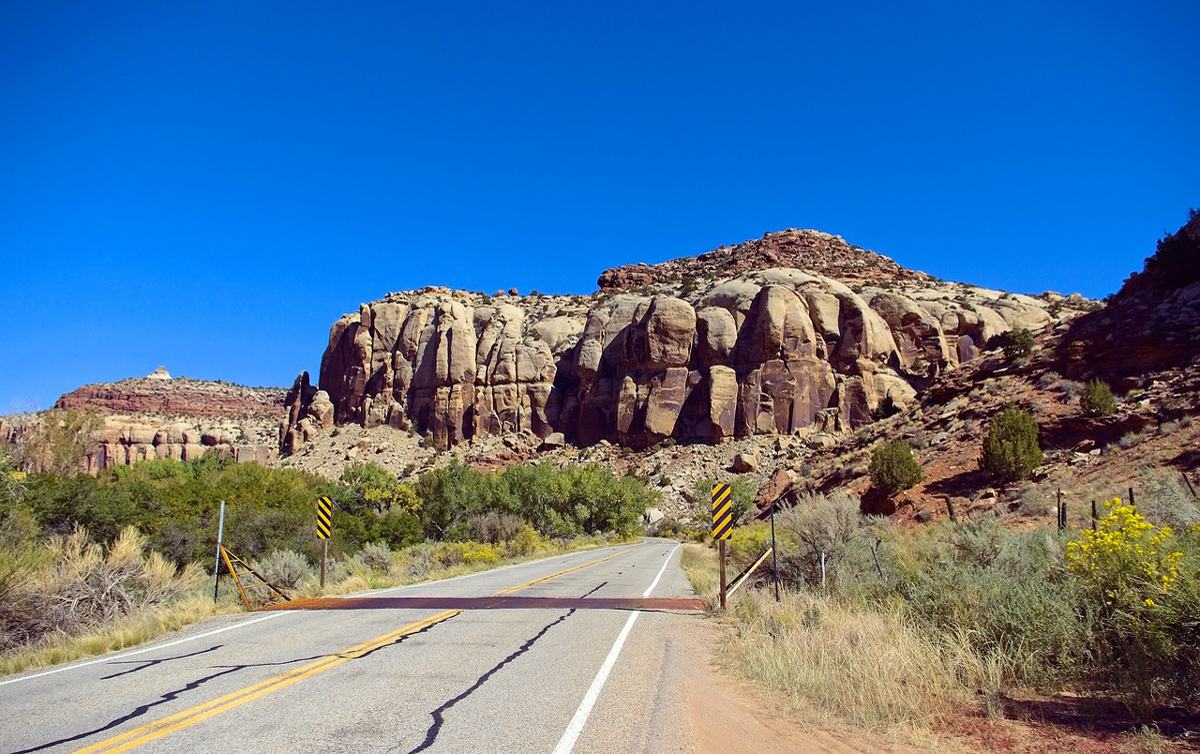
Utah third worst in U.S. for falling infrastructure investment
A new report released this week finds that Utah’s state and local government investment in infrastructure fell from 3.1 percent of state GDP in 2002 to 1.9 percent of state GDP in 2016, a decrease of 1.2 percentage points, the third largest decline among the 50 states over that time period.
The report, entitled “It’s Time for States to Invest in Infrastructure,” comes as Utah policymakers are debating whether to carry out a major, permanent tax cut of between $75 million and $225 million. Each $75 million of tax cuts is the rough equivalent of the annual revenue increase from the recent 5 cents per gallon increase in the gas tax that went into effect in 2016.
Did the last three years of additional revenue from the 2016 gas tax rise solve Utah’s infrastructure investment deficit so that the state can now afford to give up those dollars through a new, permanent tax cut of $75–225 million annually? The 2015 American Society of Civil Engineers’ Utah Infrastructure Report Card gave Utah a grade of C+, which implies a larger deficit than could be solved with just the last three years of an additional $75 million of dedicated infrastructure revenue. Advocates for increasing the gas tax in the 2015 session of the Utah Legislature state today that Utah continues to suffer from a “funding shortfall of nearly $8 billion by 2040 to address capacity expansion, maintenance and operations of our state’s significant transportation assets.” Dividing $8 billion by the 22 years between 2019 and 2040 yields an annual funding shortfall of over $350 million, even after accounting for the additional revenue from the 2016 gas tax increase.
Lawmakers in Utah have struggled for years to address this challenge by diverting sales tax revenues to the Transportation Fund through earmarks and by raising the gas tax in 2016 by 5 cents per gallon. Utah is one of the fastest growing states in the nation. Our leaders understand that they must prioritize new and increased investments in transportation, public buildings, water treatment systems, and other forms of vital infrastructure in order to build a strong economy now and in the future. But the earmarks amount to robbing Peter to pay Paul, and the 2016 gas tax increase did not even make up for inflation since the previous gas tax increase.
Moreover, failing to make necessary upfront investments in infrastructure is penny wise and pound foolish. According to page 9 of the American Society of Civil Engineers report, “damaged roads cost Utah motorists $332 million per year in extra vehicle repairs, that is over $115 per person.” In addition, ASCE’s 2015 Utah Report Card cites on page 10 UDOT projections of 200,000 person-hours daily of transportation delays unless the necessary but unfunded investments are made.
“Every state needs infrastructure improvements in order to maintain functioning public services and build a strong economy,” said Elizabeth McNichol, Senior Fellow at the Center on Budget and Policy Priorities and author of the report. “But rather than investing in infrastructure, many states have cut taxes or offered corporate subsidies in a misguided approach to boosting economic growth. This pattern of neglect by states has serious consequences for the nation’s growth and quality of life as roads crumble, school buildings become obsolete, and outdated facilities jeopardize public health.”
Federal government infrastructure investment has fallen by half over the last 35 years. This has left more of the task to state and local governments, who have struggled and largely failed to fill the gap. Today, state and local infrastructure spending as a share of Gross Domestic Product is lower than it has been since the 1950s. In Utah, total capital spending on infrastructure as a share of state GDP fell by 1.2 percentage points between 2002 and 2016, from 3.1 percent to 1.9 percent of state GDP.
Matthew Weinstein, is state priorities partnership director for Voices for Utah Children.
The viewpoints expressed above are those of the author and do not necessarily reflect those of The Independent.
How to submit an article, guest opinion piece, or letter to the editor to The Independent
Do you have something to say? Want your voice to be heard by thousands of readers? Send The Independent your letter to the editor or guest opinion piece. All submissions will be considered for publication by our editorial staff. If your letter or editorial is accepted, it will run on suindependent.com, and we’ll promote it through all of our social media channels. We may even decide to include it in our monthly print edition. Just follow our simple submission guidelines and make your voice heard:
—Submissions should be between 300 and 1,500 words.
—Submissions must be sent to editor@infowest.com as a .doc, .docx, .txt, or .rtf file.
—The subject line of the email containing your submission should read “Letter to the editor.”
—Attach your name to both the email and the document file (we don’t run anonymous letters).
—If you have a photo or image you’d like us to use and it’s in .jpg format, at least 1200 X 754 pixels large, and your intellectual property (you own the copyright), feel free to attach it as well, though we reserve the right to choose a different image.
—If you are on Twitter and would like a shout-out when your piece or letter is published, include that in your correspondence and we’ll give you a mention at the time of publication.
Articles related to “Utah third worst in U.S. for falling infrastructure investment”
A wake-up call for investment in America’s transportation infrastructure
Don’t just do infrastructure, America needs comprehensive economic development



